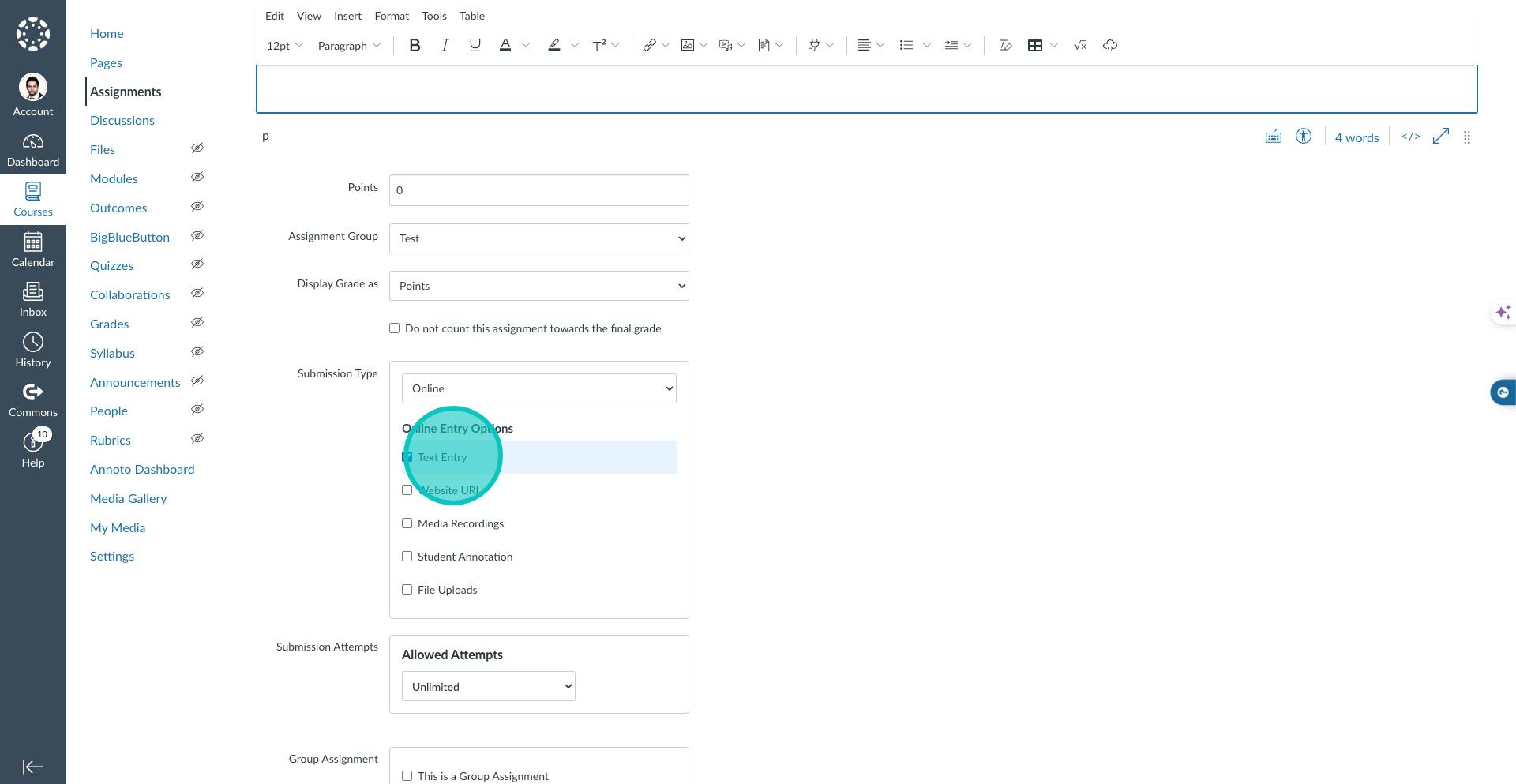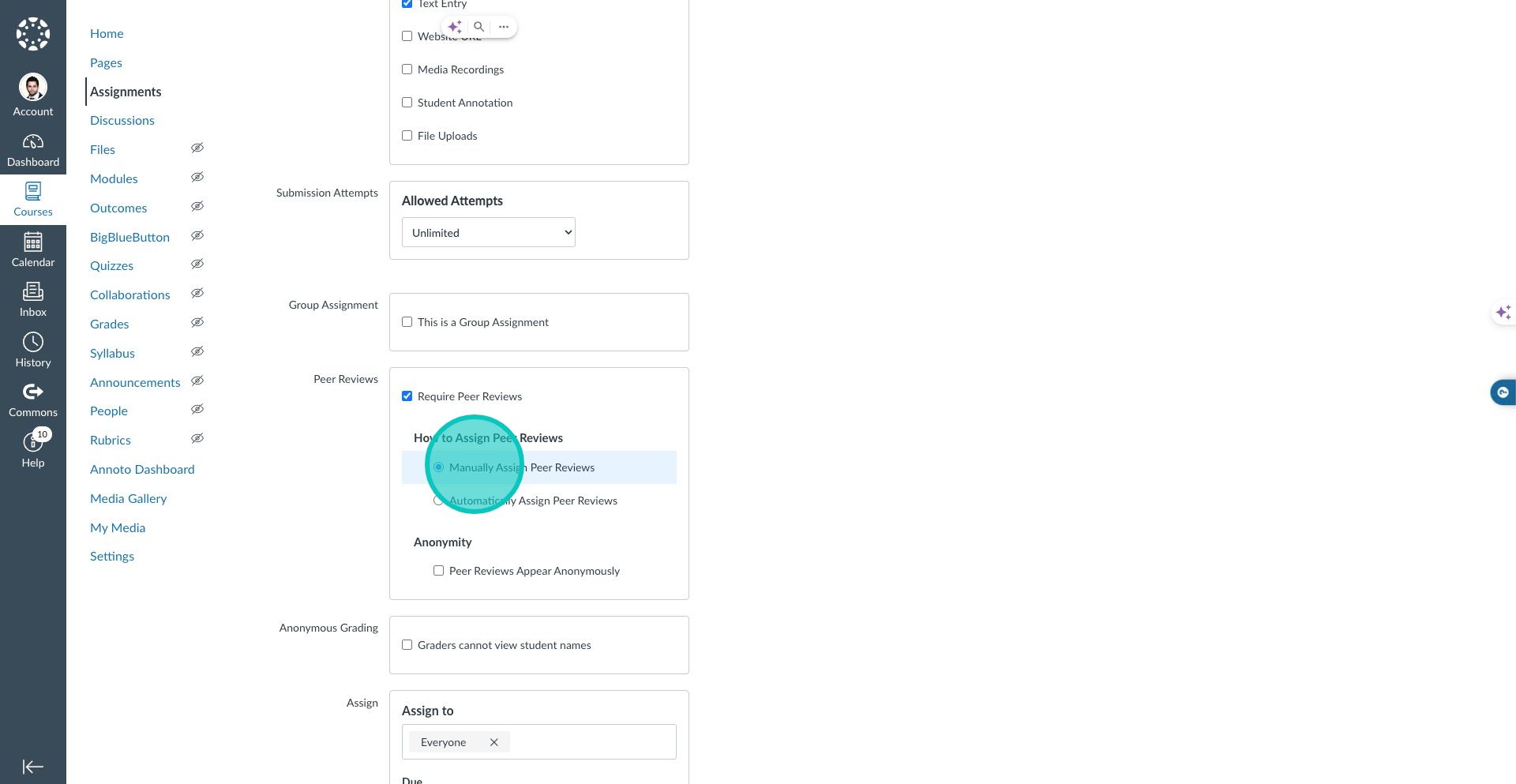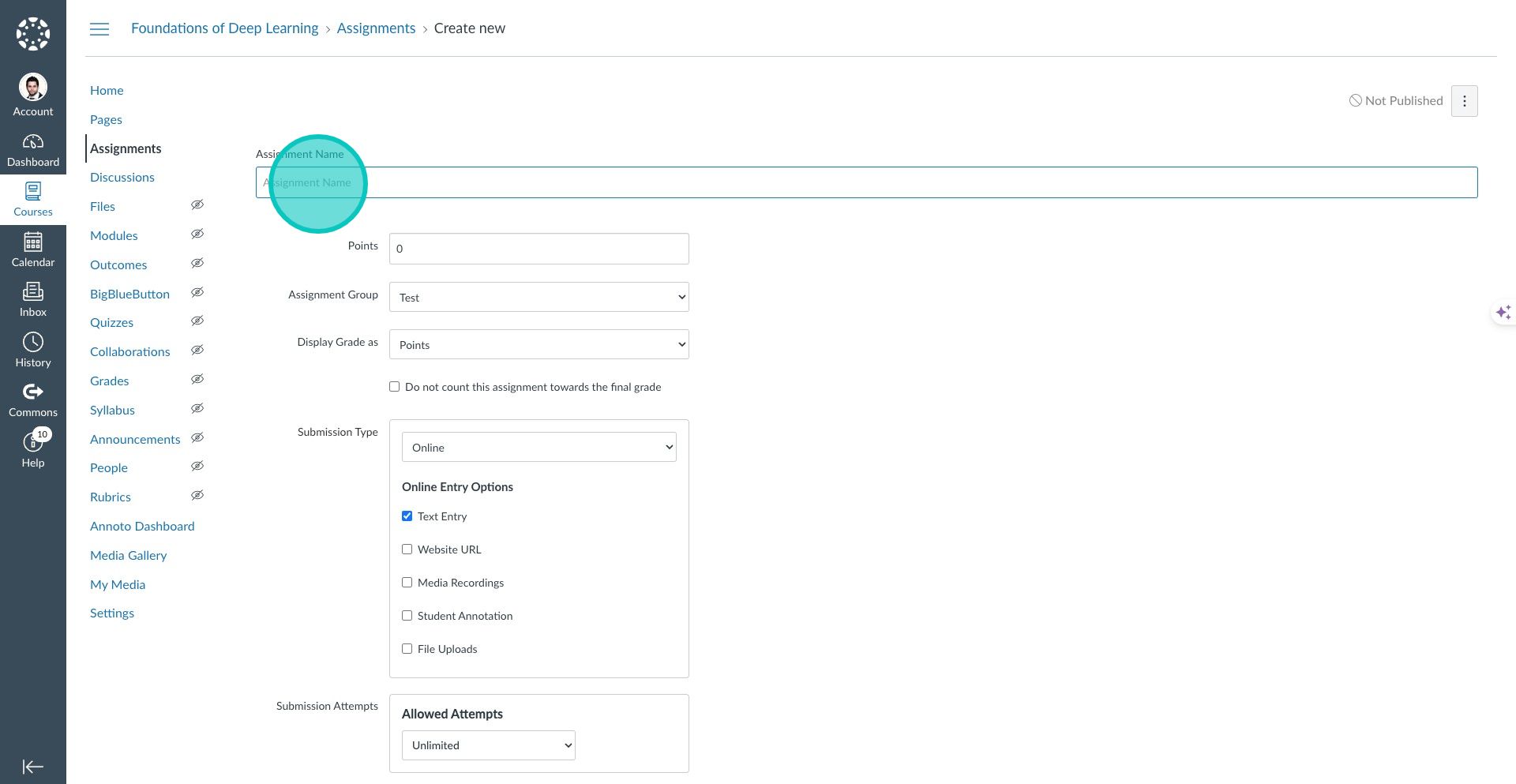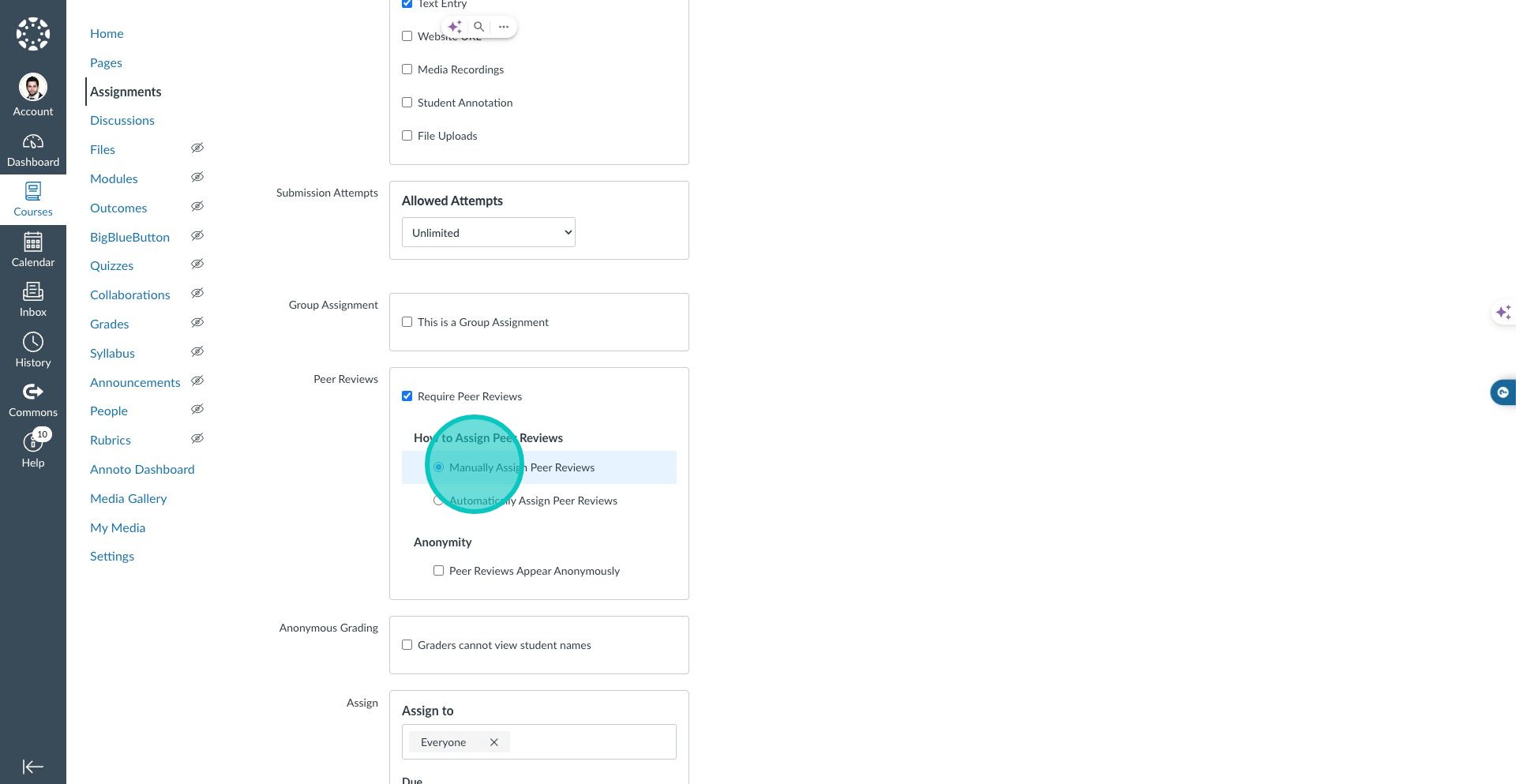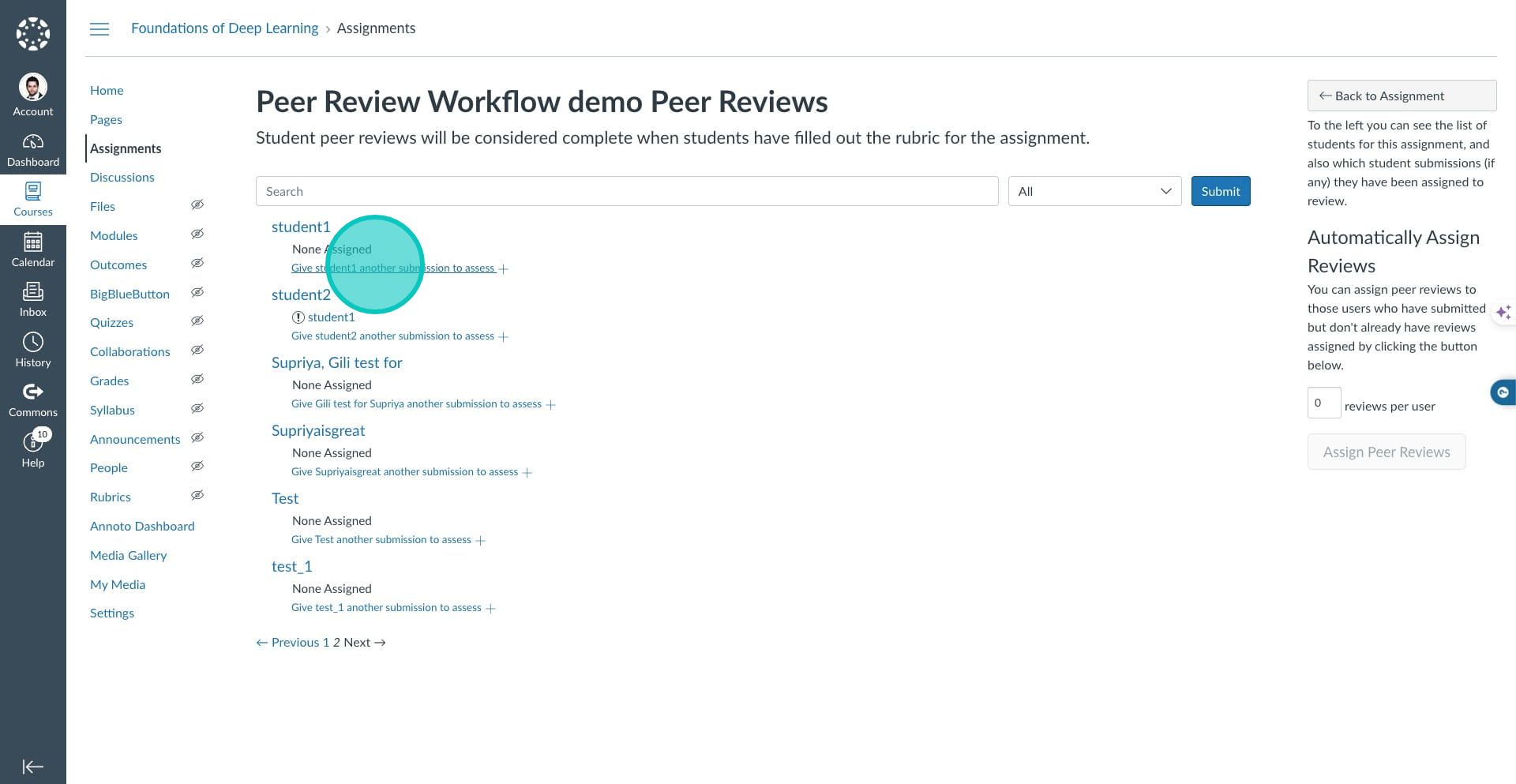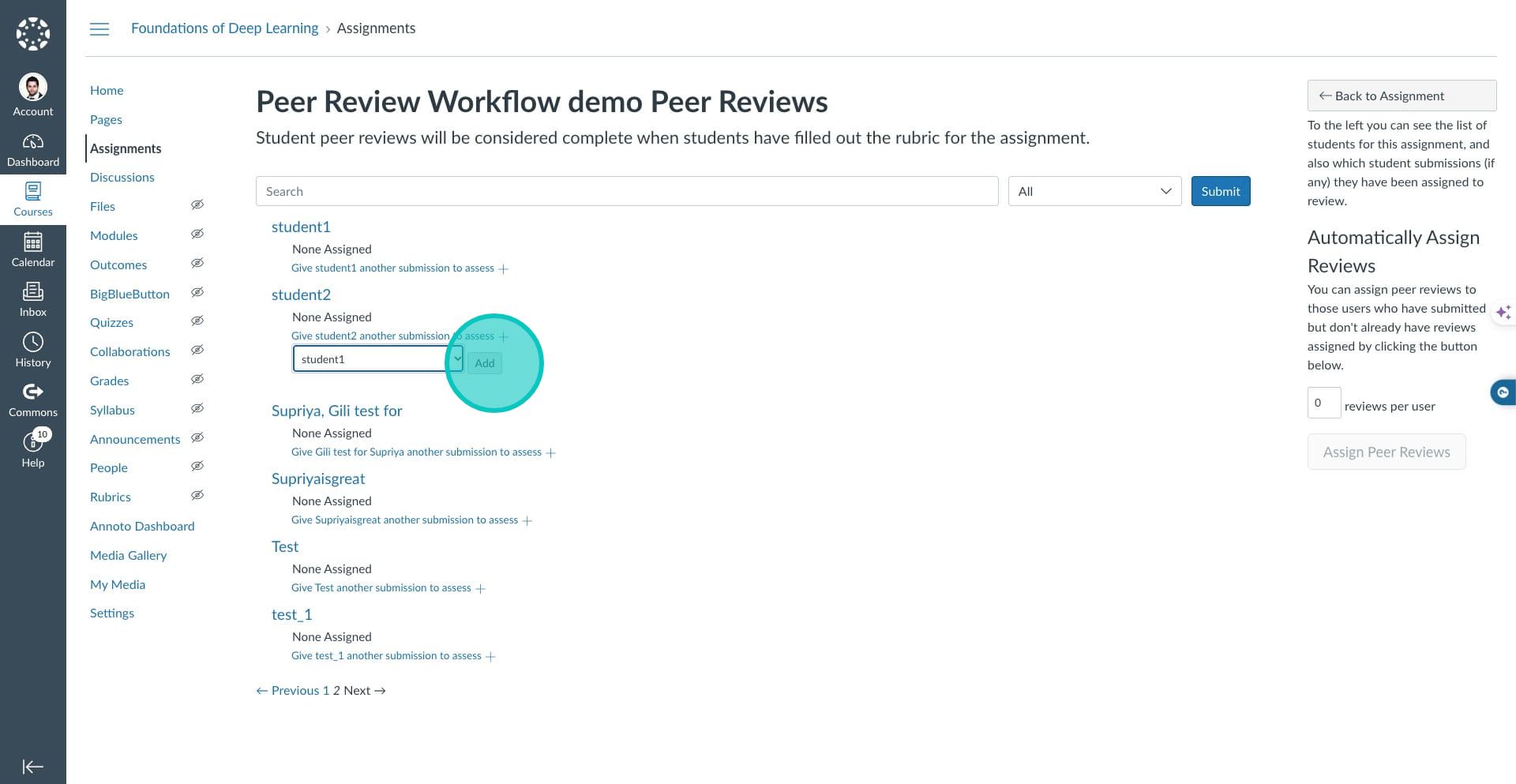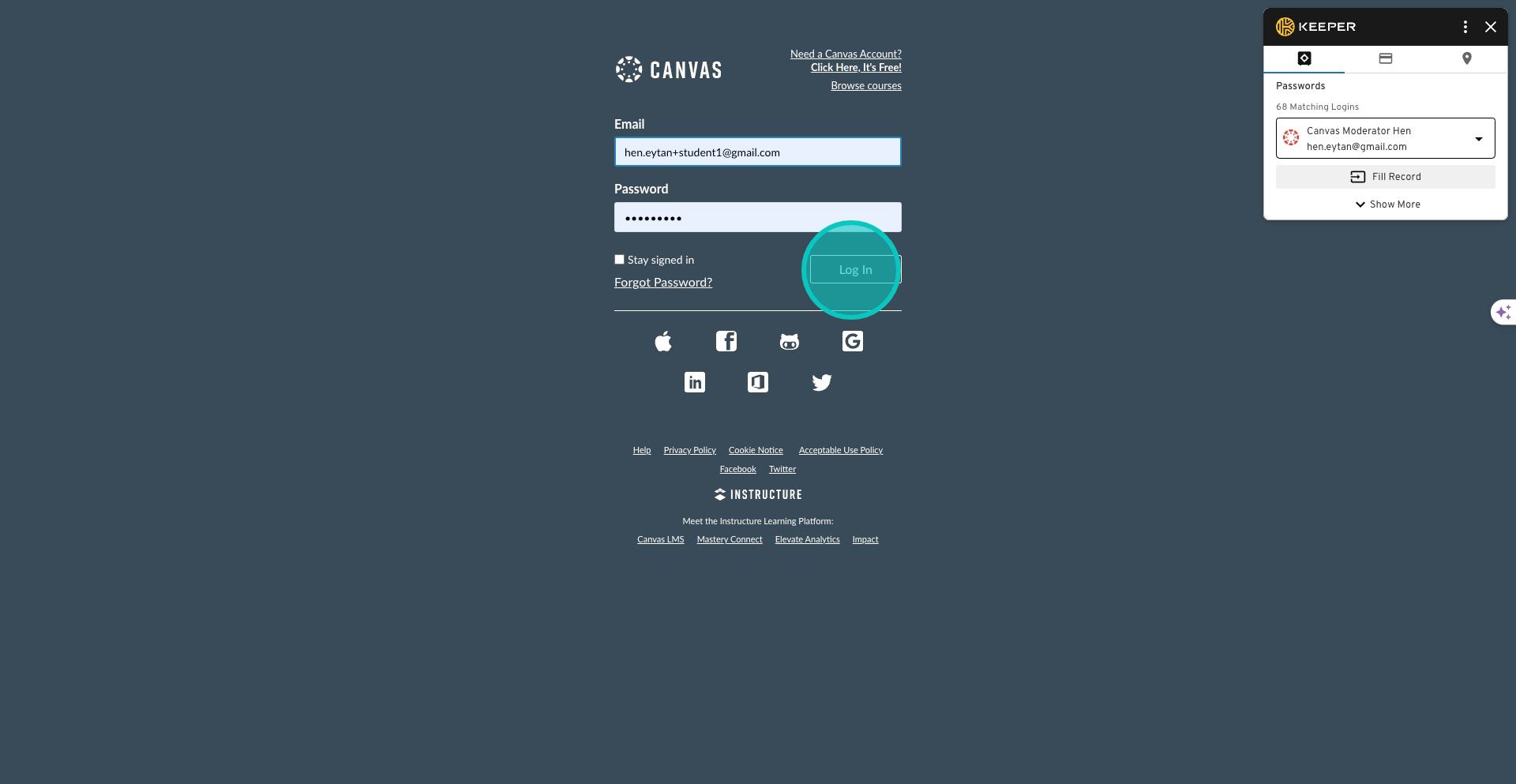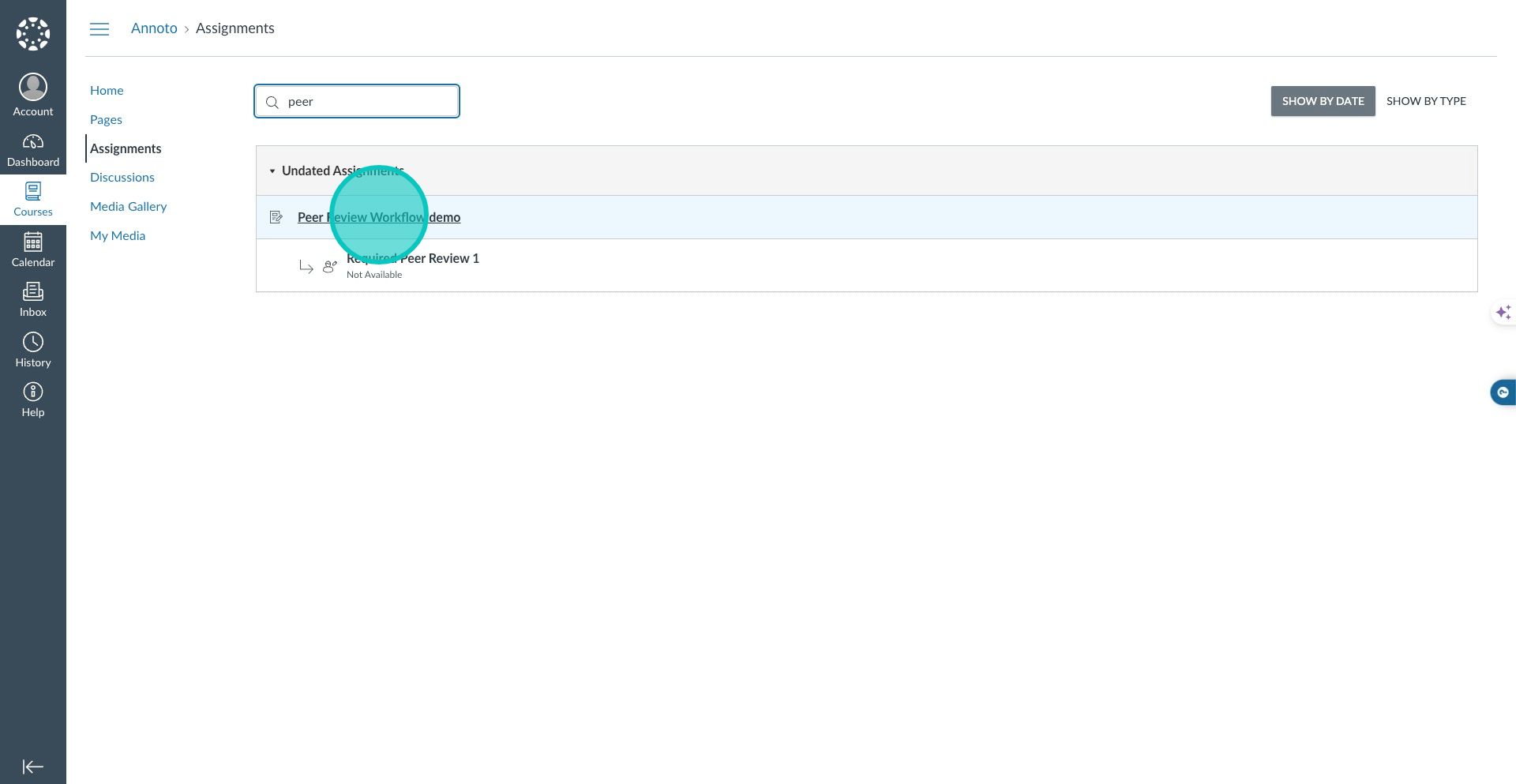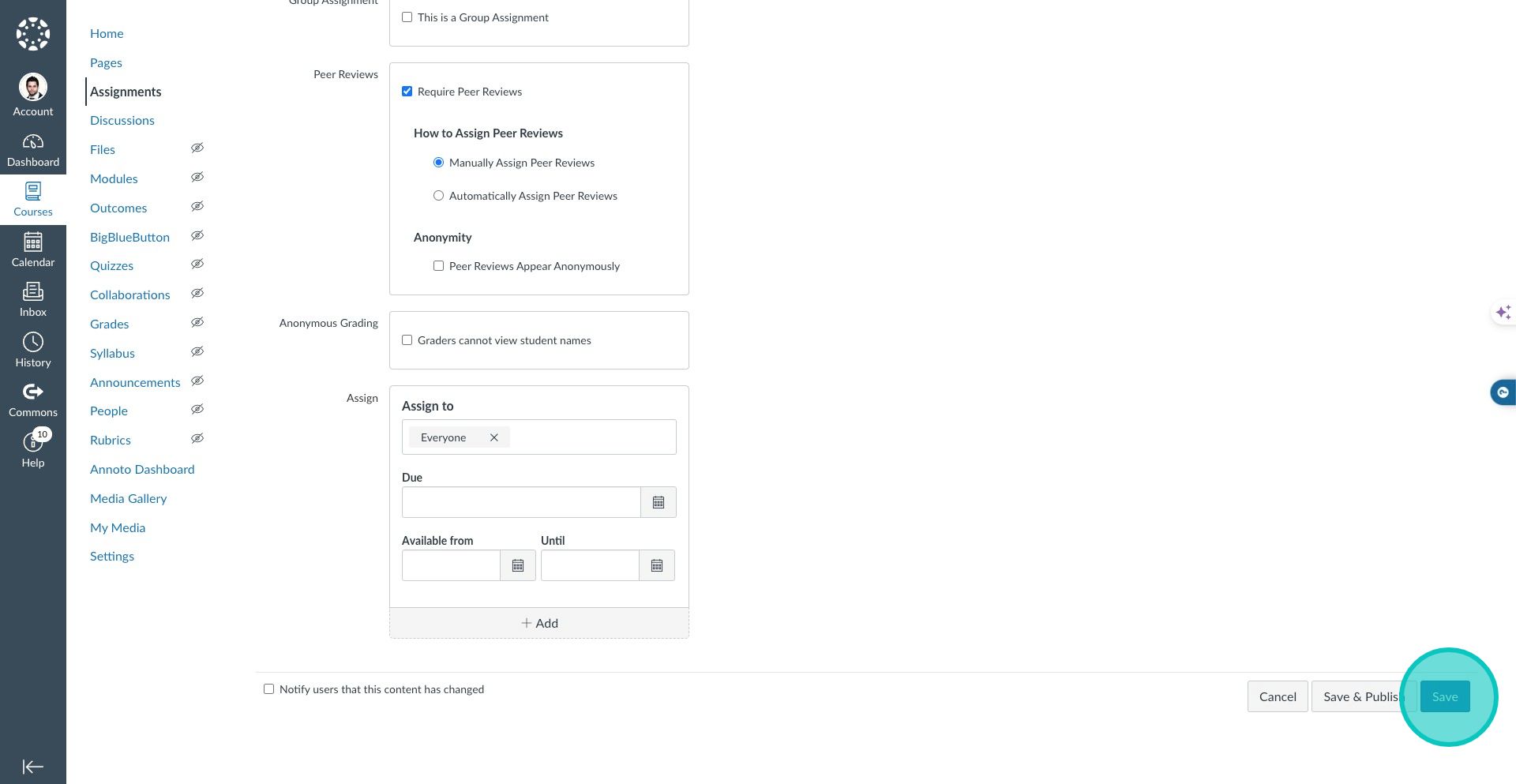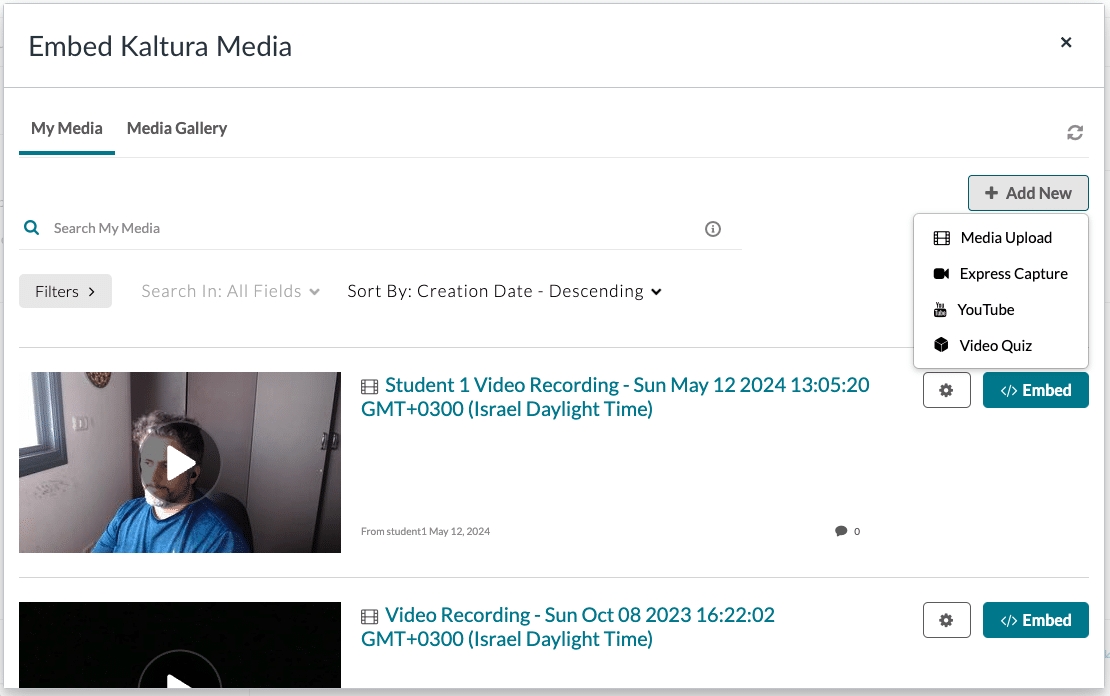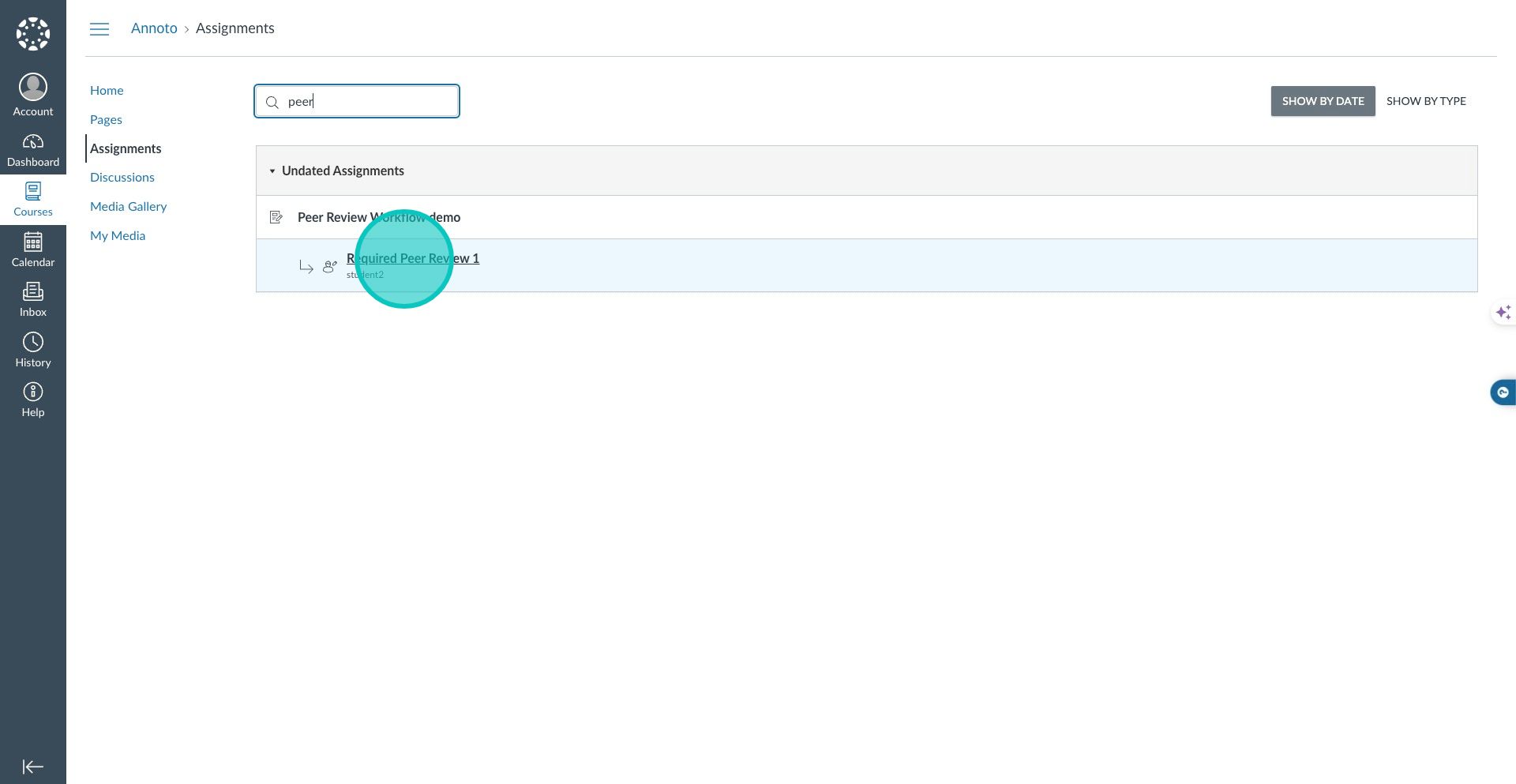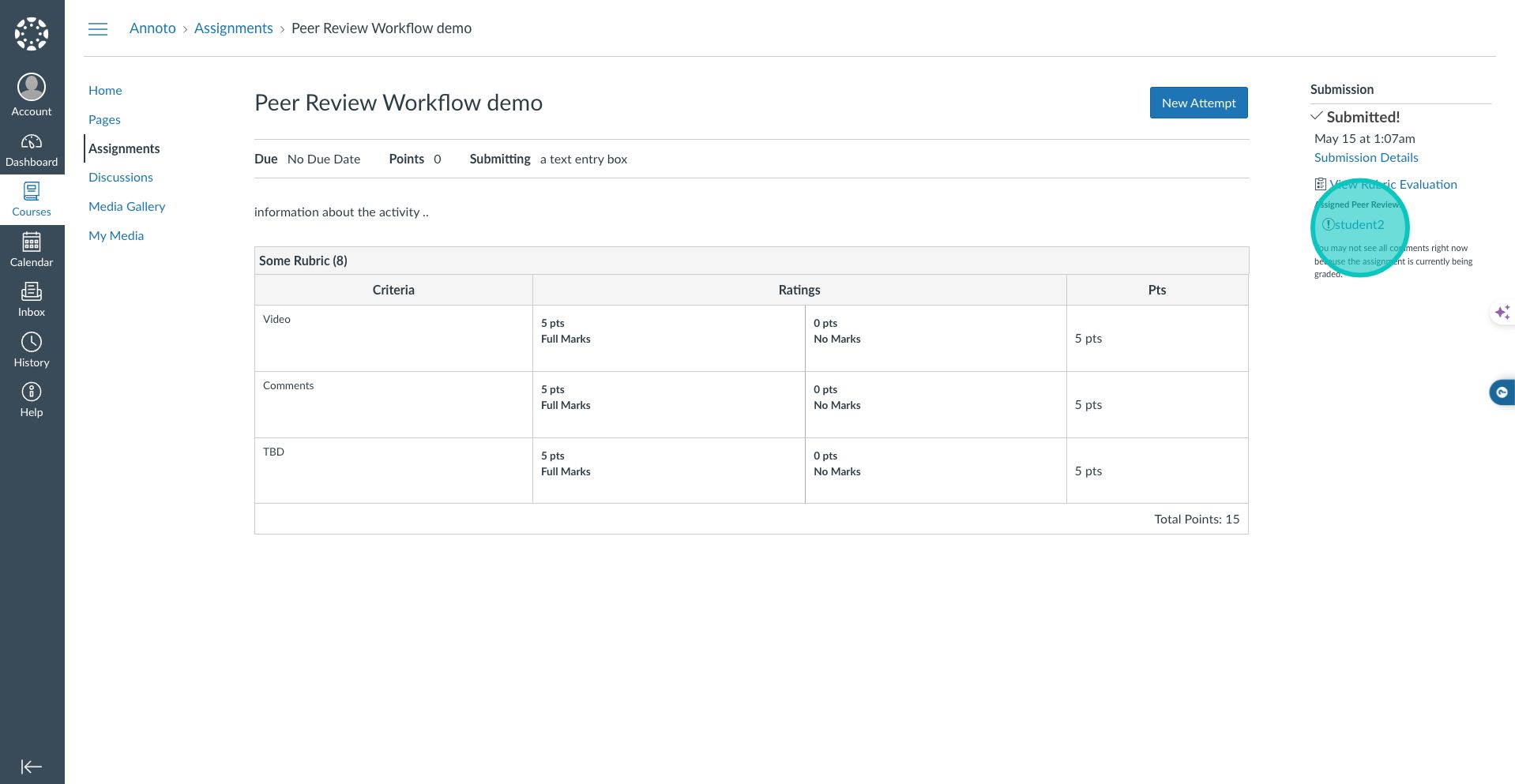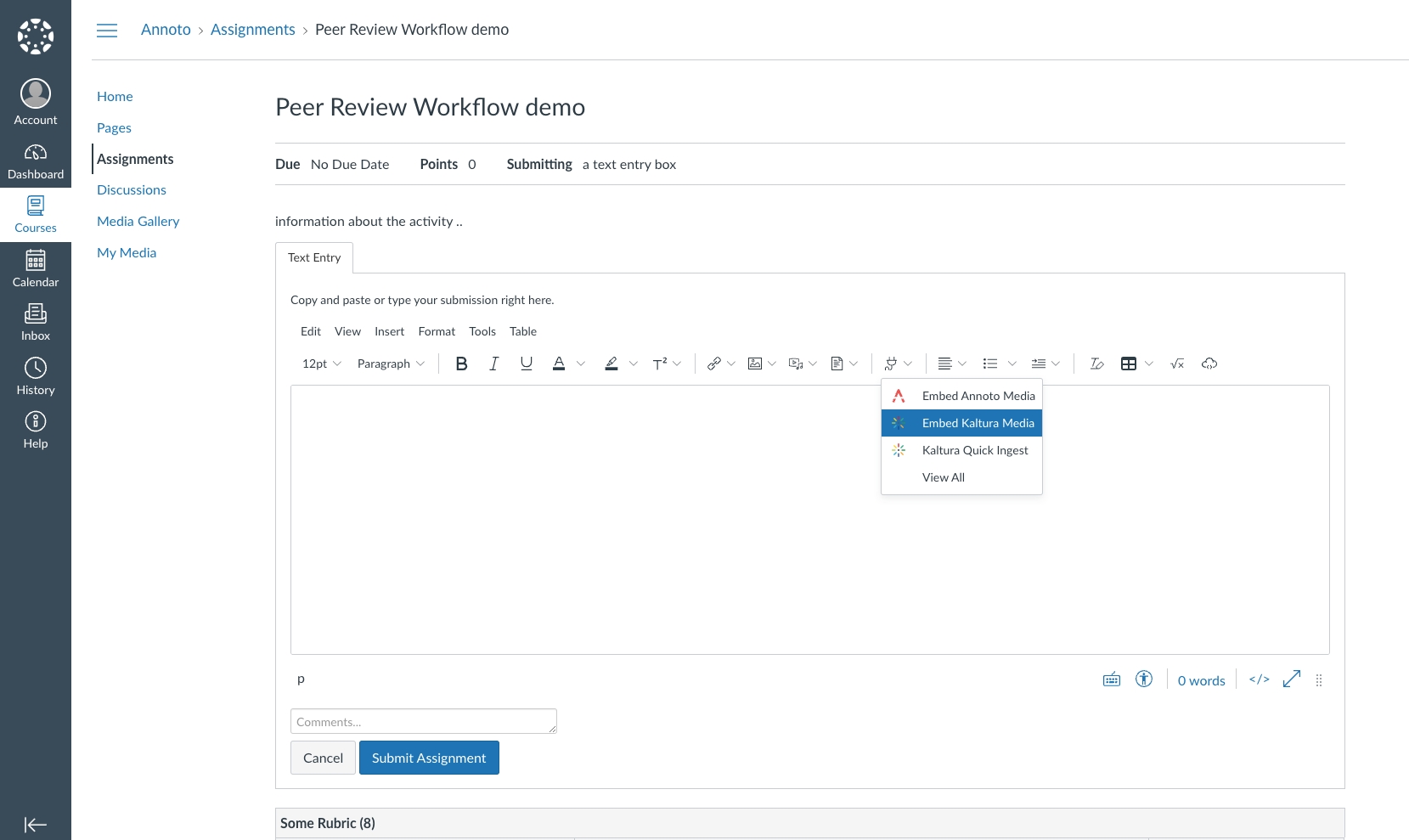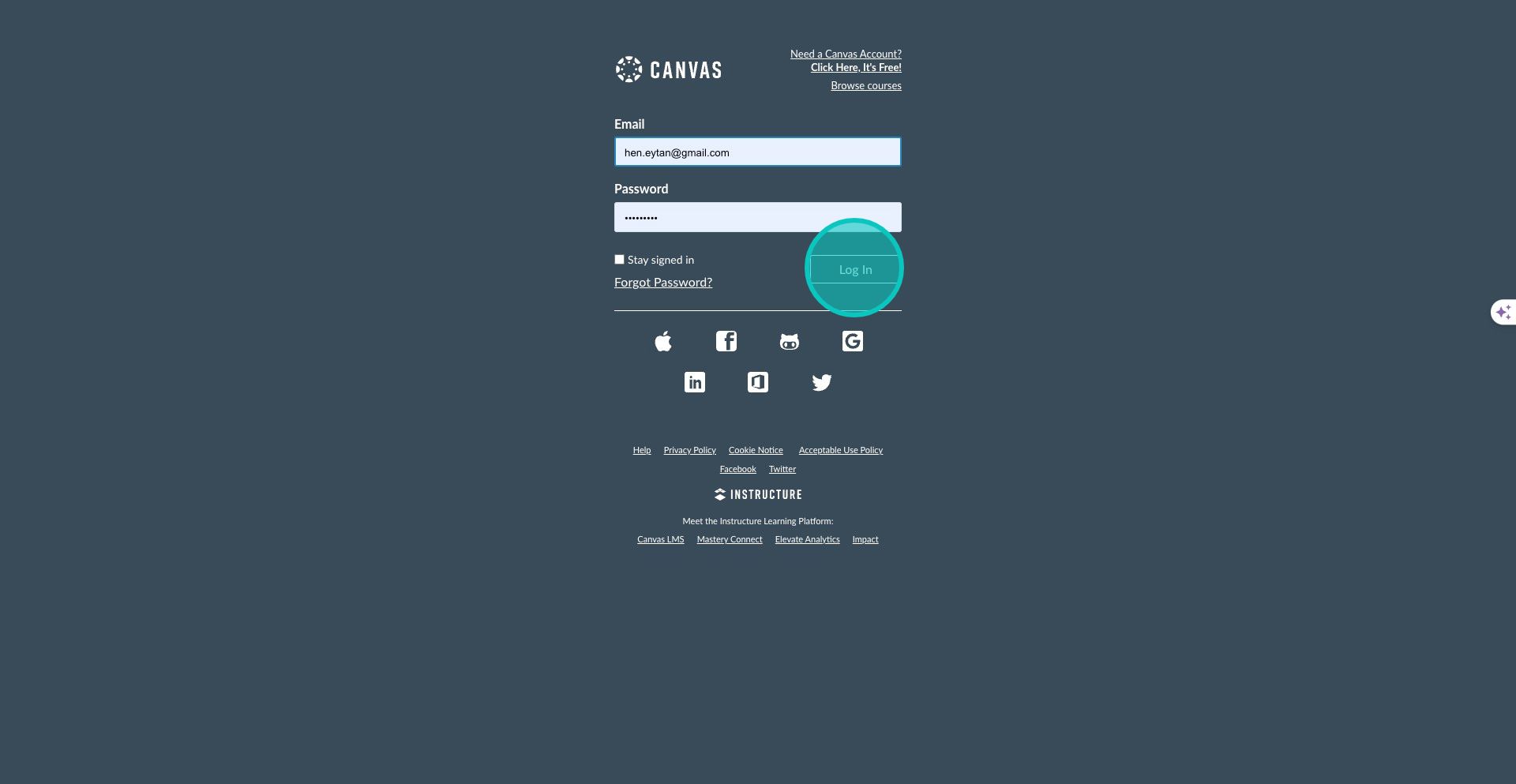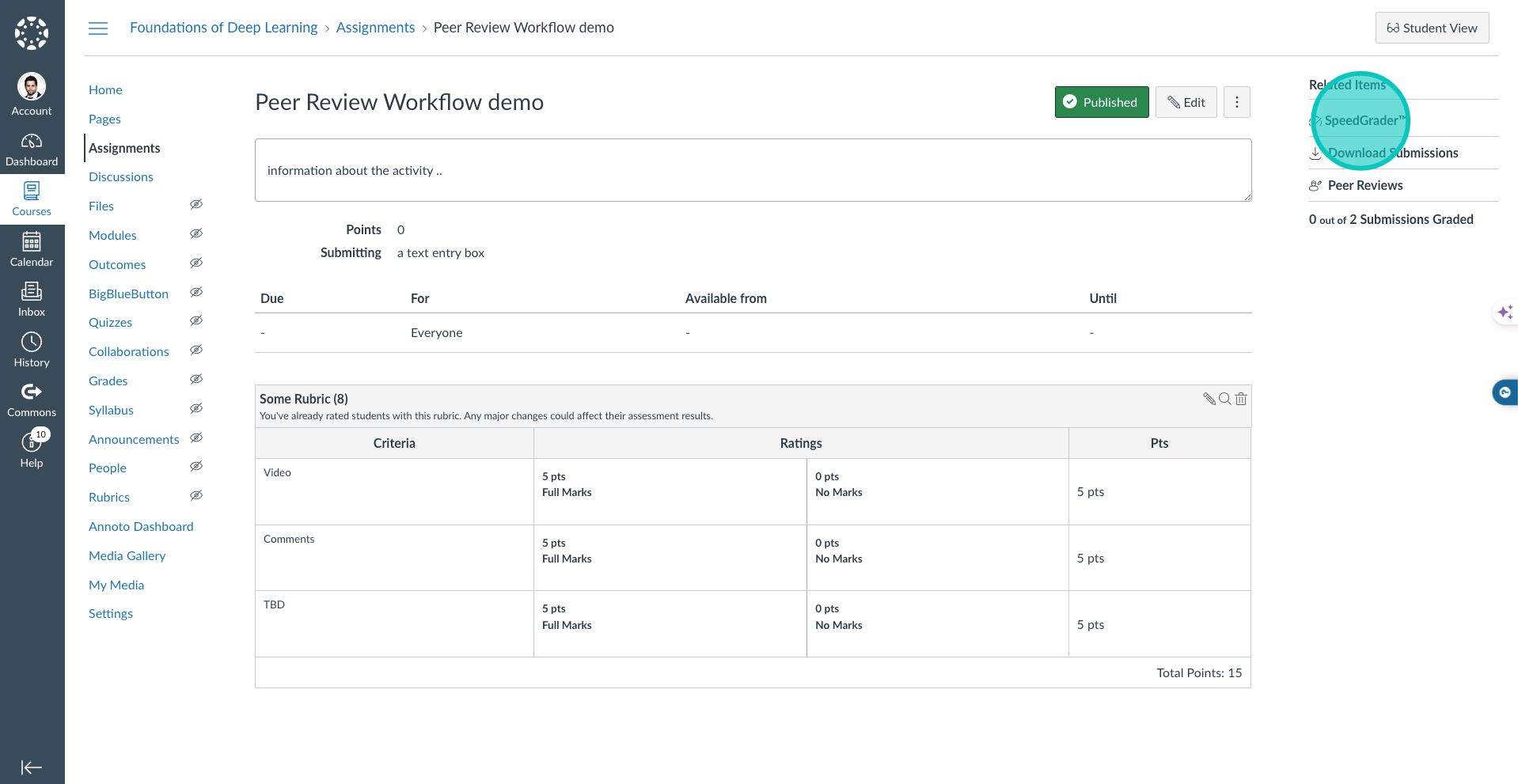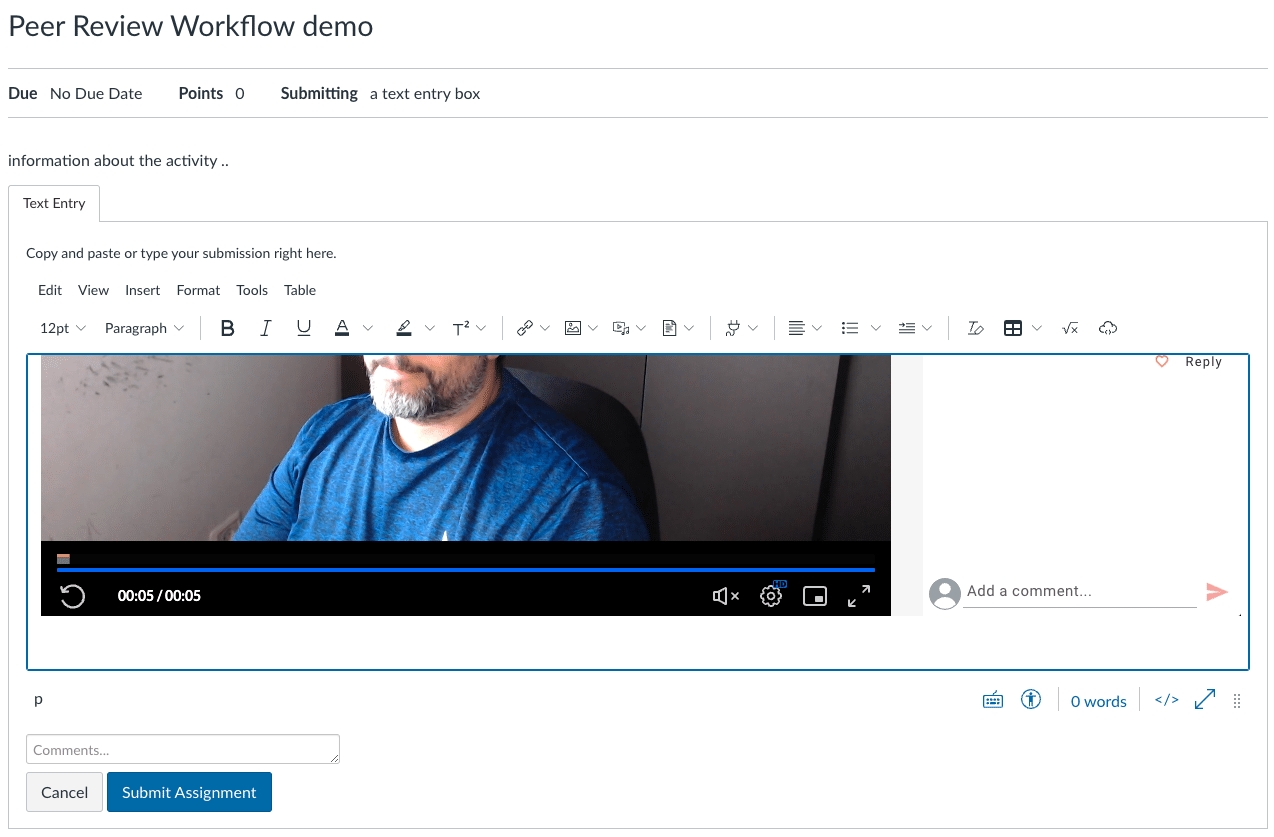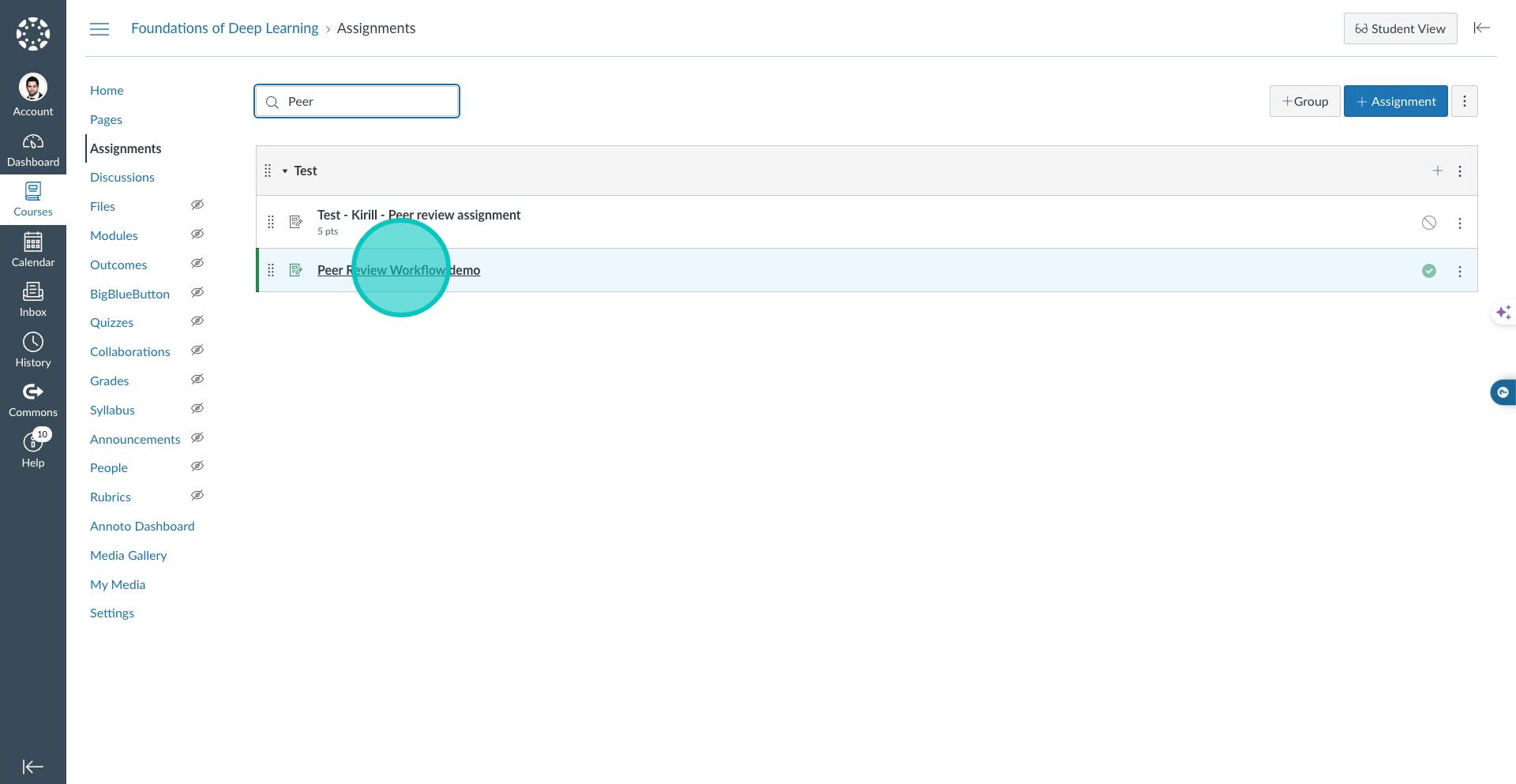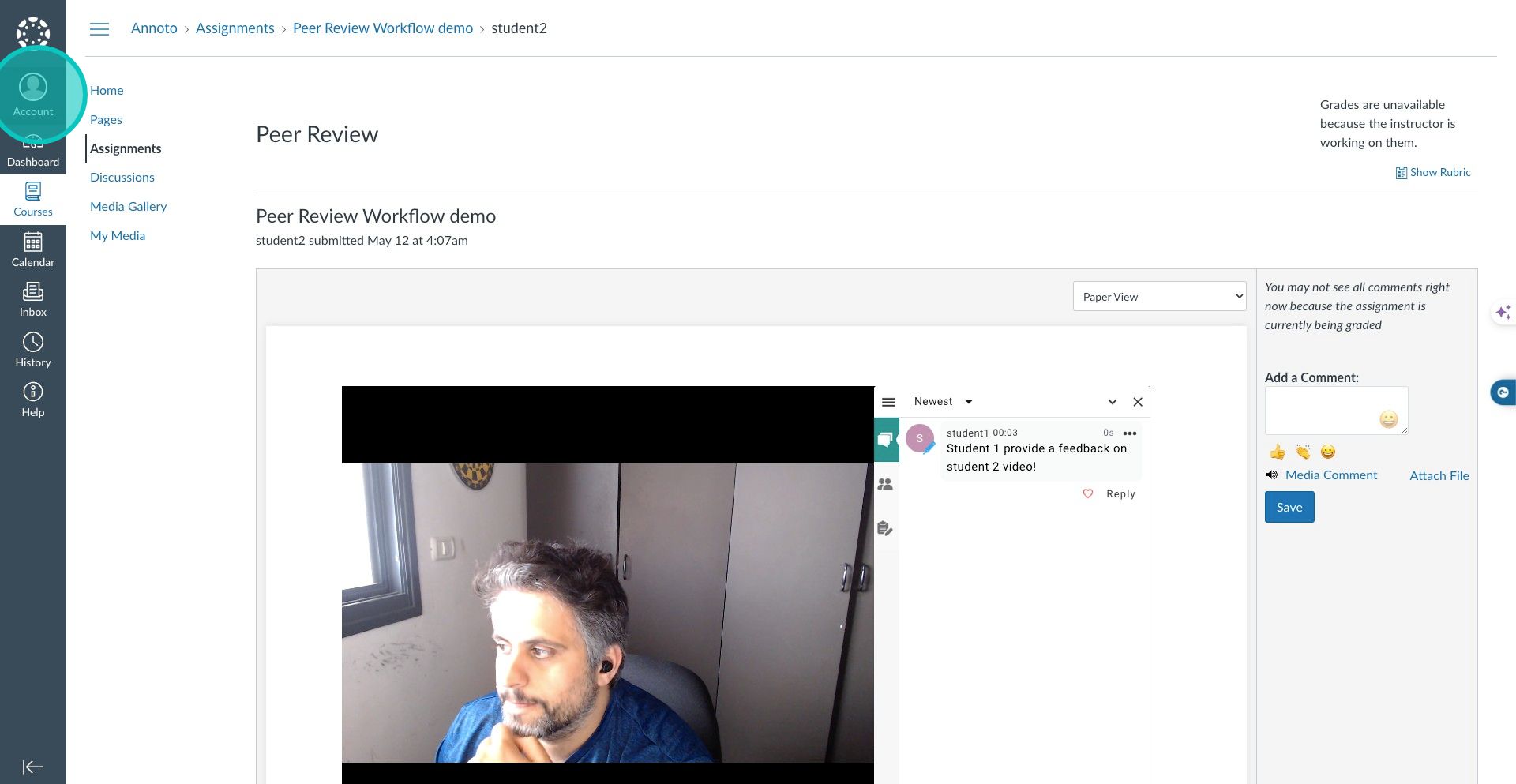Loading...
Loading...
Loading...
Loading...
Loading...
Loading...
Loading...
Loading...
Loading...
Loading...
Loading...
Loading...
Loading...
Loading...
Loading...
Loading...
Annoto's Video Activity Completion feature seamlessly integrates with Canvas LMS, providing educators with a powerful tool to monitor and manage student engagement in video-based learning activities. This feature offers detailed insights into which students have completed assigned video content, ensuring that all participants are staying on track with their coursework.
Key Benefits:
Enhanced Engagement Tracking: Easily track video completion rates within the Canvas LMS, allowing educators to see which students have watched the entire video and who might need additional support.
Automated Insights: Automatically generate reports on video activity completion, saving educators time and effort in monitoring student progress.
Informed Interventions: Identify students who may be falling behind and intervene promptly to provide necessary support, enhancing overall learning outcomes.
Seamless Integration: The Video Activity Completion feature integrates smoothly with Canvas, ensuring a hassle-free experience for both educators and students.
Data-Driven Decisions: Utilize completion data to make informed decisions about course content and delivery, optimizing the learning experience for all students.
By leveraging Annoto's Video Activity Completion feature within Canvas LMS, educators can ensure higher levels of student engagement, timely interventions, and a more interactive and effective learning environment.
Annoto enhances the learning experience by integrating interactive, in-video quizzes within Canvas LMS. This innovative feature supports educators in creating engaging, interactive content that not only enriches the learning process but also provides valuable insights into student understanding and performance. The in-video quizzes are seamlessly embedded within the video content, allowing students to interact with the material in a dynamic and engaging way.
Annoto’s in-video quizzes is the automatic grade passback to the Canvas gradebook. This means that quiz results are instantly recorded in the LMS, saving educators time and ensuring that all grades are accurately tracked and reflected in the students' overall performance records.
Annoto provides detailed analytics on quiz performance, enabling educators to gain insights into how students are interacting with the content. This data can inform instructional strategies, helping educators to identify common areas of difficulty and adjust their teaching methods accordingly.
Annoto can be used across all Canvas activities. When using In-Video Quizzes, the grading passback is supported in all types of activities (e.g Assignments, Discussions, Pages)
When using quizzes with multiple attempts, you should limit the number of attempts as part of the quiz question creation process.
In the Canvas assignment, it should be set to "Unlimited."
When creating In-Video Quizzes for a video source or entry, ensure that this video is not used elsewhere in the course. Doing so can lead to conflicts when using In-Video Quizzes and resyncing the results to the gradebook
Using Annoto within Kaltura?
Annoto enables you to seamlessly add interactive capabilities to your course videos, either at the course level or the video level.
For example, you can set default preferences for Annoto features that will be overlaid across your course video content, and then update specific videos with different desired features.
Alternatively, you can disable Annoto at the course level and enable it for specific videos.
To set up Annoto features in a course, you can activate interactive capabilities across all your course videos through the Preferences section on the Annoto Dashboard.
Here's a brief guide:
Access the Annoto Dashboard: Navigate to the Annoto Dashboard from your course platform.
Go to Kaltura's Media Gallery
Go to the Channel Actions menu
Click on Annoto Dashboard
In the Annoto Dashboard click on the Preferences tab
Enable Features: Choose the features you want to enable for your course videos. You can do this by toggling the options or selecting a preset:
This setup will apply the chosen features to all course videos, enhancing the interactive experience for your students.
There are two ways to set Annoto features for a specific video:
From the Annoto Dashboard
From the Video View
To set Annoto for a specific video from the Annoto dashboard:
In the Annoto Dashboard, click on the Hub tab.
Select the video you want to disable Annoto for (you can search by video title).
Go to the Preferences tab of this video view.
Set the features you want for this video (you can use a preset, such as "Disabled" or "Analytics," or enable only the personal notes for this video).
Go to the video where you want to enable Annoto.
Based on your organization setting, you will have one of the following two options:
You will see the Annoto dashboard open, choose which features you want to enable and exist.
This setup will apply the chosen features to the video, enhancing the interactive experience for your students.
After clicking the Icon , you will see Annoto Dashboard launch
If you click on the menu , you should then click on the Annoto Dashboard:
Transform Your Course Videos: Engage, Assess, and Gain Insights in Seconds Are you looking to make your course videos more interactive and engaging for your students?
Discover how Annoto can help you achiving anything you need! In this guide, you'll learn how to:
Enhance Learning: Incorporate in-video quizzes for real-time knowledge checks.
Skills Assessment: Conduct video critiques for comprehensive skills evaluation and peer reviews.
Deepen Understanding: Facilitate time-based discussions to promote deeper learning.
Extended Self-Learning: Create interactive content that encourages ongoing student engagement and reflection.
Gain Insights: Obtain actionable data on student interaction and video content performance.
We will show you how to effortlessly add these powerful features to your videos, making your course content interactive and engaging, an integral and dynamic part of your curriculum. Get Inspired: See how other already did it from FSU, NYU, Georgia Tech, and many other institutions are transforming their teaching methods with Annoto
Annoto is enabling your course participants to add time-based annotations as an overlay to any video content, turning passive video watching into an active and collaborative learning experience while providing you actionable insights on the students and the video content delivered.
Annoto lets you create a variety of assessments and interactive video-based activities.
You can incorporate video-based feedback into Canvas assessments, create in-video quizzes or meaningful discussions by letting your students add time-based annotations to video lectures in different content pages,or/and use it as a personal learning journal through the course, and much more.
Transform passive video viewing into an active, collaborative experience that provides you with actionable insights about students and videos.
With Annoto, you can use video content for Video Assessment, skills development, Peer Review & Reflection, Video Feedback, Collaborative Learning, and so much more.
[ANNOTO WITHIN YOUR LMS]
Annoto works within the Canvas environment within your existing video content (e.g. Kaltura, Vimeo and any other video source) with zero configuration (without redirecting the instructor outside of the Canvas LMS) and integrated into the Kaltura environment.
Annoto enhances the learning experience by integrating interactive, in-video quizzes within Canvas LMS. This innovative feature supports educators in creating engaging, interactive content that not only enriches the learning process but also provides valuable insights into student understanding and performance. The in-video quizzes are seamlessly embedded within the video content, allowing students to interact with the material in a dynamic and engaging way.
Annoto’s in-video quizzes is the automatic grade passback to the Canvas gradebook. This means that quiz results are instantly recorded in the LMS, saving educators time and ensuring that all grades are accurately tracked and reflected in the students' overall performance records.
Annoto provides detailed analytics on quiz performance, enabling educators to gain insights into how students are interacting with the content. This data can inform instructional strategies, helping educators to identify common areas of difficulty and adjust their teaching methods accordingly.
Annoto can be used across all Canvas activities. When using In-Video Quizzes, the grading passback is supported in all types of activities (e.g Assignments, Discussions, Pages)
For each In-Video Quiz Graded Activity, an assignment will be created in Canvas. In this assignment, you can adjust all the assignment settings, such as points and due dates.
Annoto can be used as an activity in Canvas pages. Once A video with Annoto is added, Annoto can be used for discussions, Q&A, faculty-students interaction, students-interaction, tasks, etc. In order to add a video with Annoto to a page:
Go to Pages
Click on “View all pages” button:
Click the “ +Page “ button to create a new page:
Add page title
In the text box select "Embed Kaltura Media" - it will be either in the toolbar, or under “Apps" plug:
Choose the video you want to add.
Save & Publish
Once Annoto is enabled in your course, it is automatically added to videos that are embedded in your Canvas.
In order to use Annoto in a video within your Canvas, choose the activity you are interested in (Pages\ Discussion, etc.)
1. Create new
2. Add a title to the activity
4. Choose Embed Annoto Media
5. In the Embed Annoto Media window, add the URL (in [Embed Code\ URL]):
6. Add the video title.
If you want – you can set the embed aspect ratio and the embed size:
7. Click Embed
8. Save the activity
9. Annoto will be automatically added to the video
You can access the Annoto Dashboard in two ways:
From the Course Level
From the Video view
You can access the Annoto Insights Dashboard directly from the Canvas menu:
The Annoto Insights Dashboard is displayed.
Go to one of the video where you have Annoto.
Based on your organization setting, you will have one of the following two options:
Click here to learn about the amazing analytics the dashboard provides and all the insights that can be gained from them.
In this brief demonstration, we will show you how to create a skill assessment review process using a video that a student has submitted. This process allows instructors to provide feedback on the student's assignment by using in-context comments provided by Annoto. Here's the workflow you can follow:
Set up the assignment.
Establish rubrics that include the desired criteria.
Have students submit their assignments and reflect on them
Instructors can then review the videos, provide feedback, and assign a grade based on the rubrics and criteria they have set.
All of this can be done within the speedgrader of Canvas.
That's it! This process allows a seamless and effective review process and makes grading more structured and efficient.
Annoto provides powerful analytics to gain deep insights into learners' performance within in-video quizzes.
By tracking responses in real-time, educators can identify trends, pinpoint knowledge gaps, and assess learner engagement directly within the video content.
These insights allow for a better understanding of how learners interact with the material, helping to tailor future content and improve overall learning outcomes.
Annoto can be used on a video that is used for discussions. In this case – Annoto can be used to provide guidance\ instructions to students as well as questions for them to answer in the discussion. As every comment is time-tagged in Annoto, questions can be related to specific moments in the vide and engage a discussion related to that.
Go to Discussions
Click the “ +Discussion “ button to create a new discussion
Add topic title
In the text box select "Embed Kaltura Media" - it will be either in the toolbar, or under “Apps" plug:
Add the media you want in this discussion
Set all other options as you prefer.
Click “Save”
Resync Outcomes to LMS Gradebook is a feature that ensures seamless synchronization between the results of activities performed within Annoto and the Learning Management System's (LMS) gradebook.
This function helps educators automatically update student grades based on their engagement, quiz completion, and other interactive actions within videos, minimizing manual grading efforts.
By keeping the LMS gradebook continuously up-to-date, the feature supports efficient tracking of student progress and improves accuracy in reporting, fostering a more streamlined workflow for instructors.
Multiple attempts are not set in the LMS, For Example, In the LMS (e.g. Canvas) assignment, it should be set to "Unlimited." Learners will not be able to redo the assignment or retake the quiz an unlimited number of times because Annoto is managing the retries, and the LMS (e.g. Canvas) settings do not affect this activity.
Make sure the Assignment Due Date has not passed.
When creating In-Video Quizzes for a video source or entry, make sure that this video is not used elsewhere in the course. Using the same video in different contexts can lead to students answering quizzes outside of the intended assignment context, such as on a simple page that is not connected to or defined as an assignment. Consequently, their results may not sync properly. This can create conflicts when using In-Video Quizzes and trying to resync the results with the gradebook.
3. In the content section, click the Applications icon:
After clicking the Icon , you will see Annoto Dashboard launch
If you click on the menu , you should then click on the Annoto Dashboard:
Annoto's Video Activity Completion feature seamlessly integrates with Canvas LMS, providing educators with a powerful tool to monitor and manage student engagement in video-based learning activities. This feature offers detailed insights into which students have completed assigned video content, ensuring that all participants are staying on track with their coursework.
Key Benefits:
Enhanced Engagement Tracking: Easily track video completion rates within the Canvas LMS, allowing educators to see which students have watched the entire video and who might need additional support.
Automated Insights: Automatically generate reports on video activity completion, saving educators time and effort in monitoring student progress.
Informed Interventions: Identify students who may be falling behind and intervene promptly to provide necessary support, enhancing overall learning outcomes.
Seamless Integration: The Video Activity Completion feature integrates smoothly with Canvas, ensuring a hassle-free experience for both educators and students.
Data-Driven Decisions: Utilize completion data to make informed decisions about course content and delivery, optimizing the learning experience for all students.
By leveraging Annoto's Video Activity Completion feature within Canvas LMS, educators can ensure higher levels of student engagement, timely interventions, and a more interactive and effective learning environment.
First, ensure that you have already created criteria in your Annoto Assessment Library.
Annoto's Assessment Criteria Library is a robust feature designed to enhance the educational experience by providing a structured and consistent way to evaluate video-based content.
Here's a concise overview of its key components and benefits:
Key Components:
Pre-Defined Criteria: The library offers a set of pre-defined assessment criteria, making it easy for educators to apply standardized evaluations across different courses and videos.
Customizable Options: Users can tailor the criteria to suit specific course needs, ensuring assessments are relevant and targeted.
Reusable for All Courses: Criteria can be saved and reused across multiple courses, saving time and effort in the assessment setup process.
User-Friendly Interface: Designed with ease of use in mind, the interface allows educators to quickly set up and modify criteria, ensuring a hassle-free experience.
In this brief demonstration, we will show you how to create a peer review process using a video that a student has submitted.
This process allows both peers and instructors to provide feedback on the student's assignment by using in-context comments provided by Annoto.
Here's the workflow you can follow:
Set up the assignment and the peer reviews.
Establish rubrics that include the desired criteria.
Have students submit their assignments and review each other's work.
Instructors can then review the videos, provide feedback, and assign a grade based on the rubrics and criteria they have set.
All of this can be done within the SpeedGrader of Canvas.
That's it! This process allows for effective peer review and makes grading more structured and efficient.
Click on "Assignments"
Click on the "+ Assignment" button to create a new assignment.
4. Please provide the name of the assignment. for the example we will use "Peer Review Workflow demo"
5. Select the Submission Type as "Online" and also check the "Text Box" for the Online Entry Option.
6. Choose your preferred method for assigning peer reviews:
7. In this example, we will utilize the Manual Assign Peer Review option.
8. Once you have everything ready, click on the "Save" button.
9. We'll have Student 1 and Student 2 review each other's assignments.
10. Click on the option "Give student2 another submission to assess" and select student 1.
11. Click on the option "Give student1 another submission to assess" and select student 2.
12. We'll log in as student 1 to submit the assignment.
13. Click on "Peer Review Workflow demo"
14. Click to "Start Assignment" and then click on "Embed Kaltura Media"
15. Choose between using "Express Capture" to record your camera or uploading a pre-recorded video. Once you have made your decision, click on the option to embed the video.
16. Click on "Submit Assignment"
17. Click on "Required Peer Review 1"
18. Click on Student 2 to review their video assignment.
19. I, as Student 1, now have the ability to provide feedback on Student 2's assignment using time-based comments (Text & Video) through Annoto.
20. Once Student 1 and Student 2 finished to provide feedback in each other assigment, I as an sintractor can review thier assigments and provide the a grade using the Canvas Speed graded
21. Click on "Peer Review Workflow demo"
22. To review student submissions, click on "SpeedGrader."
23. In this view, you have the ability to:
Review Student 2's video submission and also review Student 1's feedback.
Provide your own time-based feedback in the form of text and video using Annoto comments. Assign a grade based on the specific rubrics you have defined.
And the best part is, you can perform all of these tasks directly within Canvas!
Have questions? Contact us at support@annoto.net
Manual -
Automatic
Annoto enhances learning in Canvas by integrating interactive, in-video quizzes with Kaltura videos. This feature supports educators in creating engaging content and provides valuable insights into student performance.
Quizzes are seamlessly embedded within videos, allowing dynamic student interaction. With automatic grade passback to the Canvas gradebook, quiz results are instantly recorded, saving time and ensuring accurate grade tracking.
Detailed analytics on quiz performance help educators adjust instructional strategies based on student interaction and areas of difficulty.























